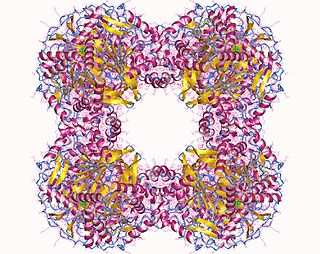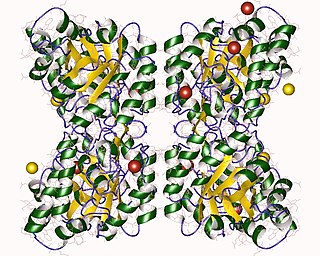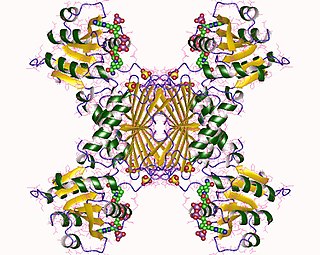| 2,3,4,5-tetrahydropyridine-2,6-dicarboxylate N-succinyltransferase | |||||||||
|---|---|---|---|---|---|---|---|---|---|
| Identifiers | |||||||||
| EC no. | 2.3.1.117 | ||||||||
| CAS no. | 88086-34-4 | ||||||||
| Databases | |||||||||
| IntEnz | IntEnz view | ||||||||
| BRENDA | BRENDA entry | ||||||||
| ExPASy | NiceZyme view | ||||||||
| KEGG | KEGG entry | ||||||||
| MetaCyc | metabolic pathway | ||||||||
| PRIAM | profile | ||||||||
| PDB structures | RCSB PDB PDBe PDBsum | ||||||||
| Gene Ontology | AmiGO / QuickGO | ||||||||
| |||||||||
In enzymology, a 2,3,4,5-tetrahydropyridine-2,6-dicarboxylate N-succinyltransferase (EC 2.3.1.117) is an enzyme that catalyzes the chemical reaction
- succinyl-CoA + (S)-2,3,4,5-tetrahydropyridine-2,6-dicarboxylate + H2O CoA + N-succinyl-L-2-amino-6-oxoheptanedioate
The 3 substrates of this enzyme are succinyl-CoA, (S)-2,3,4,5-tetrahydropyridine-2,6-dicarboxylate, and H2O, whereas its two products are CoA and N-succinyl-L-2-amino-6-oxoheptanedioate.
This enzyme belongs to the family of transferases, specifically those acyltransferases transferring groups other than aminoacyl groups. The systematic name of this enzyme class is succinyl-CoA:(S)-2,3,4,5-tetrahydropyridine-2,6-dicarboxylate N-succinyltransferase. Other names in common use include tetrahydropicolinate succinylase, tetrahydrodipicolinate N-succinyltransferase, tetrahydrodipicolinate succinyltransferase, succinyl-CoA:tetrahydrodipicolinate N-succinyltransferase, succinyl-CoA:2,3,4,5-tetrahydropyridine-2,6-dicarboxylate, and N-succinyltransferase. This enzyme participates in lysine biosynthesis.






